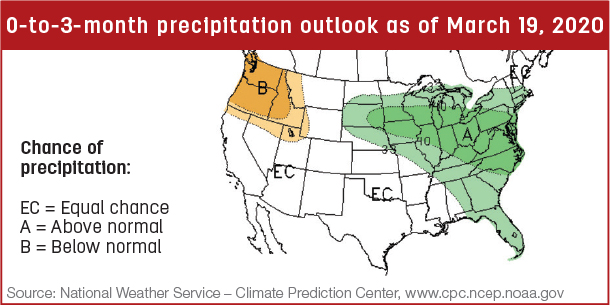Spring is the time of peak forage production for most operations in the South Central region. Growing conditions range considerably across this region, but good grazing and forage management practices are key to successful cow-calf operations. If cows are keeping up with forage growth during peak production, then they will be overgrazing the rest of the year.
When managing forages, it is critical to leave enough ungrazed plant material for good regrowth and long-term stand health. When plants are overgrazed, it reduces root mass and root depth, which slows regrowth and reduces yield. When I receive calls from ranches struggling with low reproductive rates and low weaning weights, the problem almost always goes back to overgrazing due to the ranch being overstocked.
It is important to consider the number of grazable acres, soil type, forage species, annual rainfall, cow size and fertilizer applications when determining stocking rates. Appropriate stocking rates in the South Central region can range from 2 acres per cow-calf pair to a few pairs per section.

The acres covered by thick woods or brush, roads, oil pads, buildings, lakes or ponds, working pens or unproductive ground should be accounted for and subtracted from the total number of acres. This can have a significant impact on the carrying capacity of a ranch. Some soils are more productive than others, and this should be considered as well. The USDA web soil survey is an online tool that can be used to measure grazable acres and also look at soil types and their differences in forage production potential.
The effect of cow size is often overlooked when determining stocking rates. For example, with many native range species, the target may be to only let cows consume 25% of the forage produced per acre. If there is 3,000 pounds of forage produced per acre, then reasonable stocking rates would be about:
- 13 acres for a 1,000-pound cow and her calf
- 15.6 acres for a 1,200-pound cow and her calf
- 18.2 acres for a 1,400-pound cow and her calf
The same effect of cow size is seen with introduced forages that are well-fertilized. Assuming 70% utilization and 6,000 pounds of forage per acre, reasonable stocking rates would be about:
- 2.3 acres for a 1,000-pound cow and her calf
- 2.8 acres for a 1,200-pound cow and her calf
- 3.3 acres for a 1,400-pound cow and her calf








